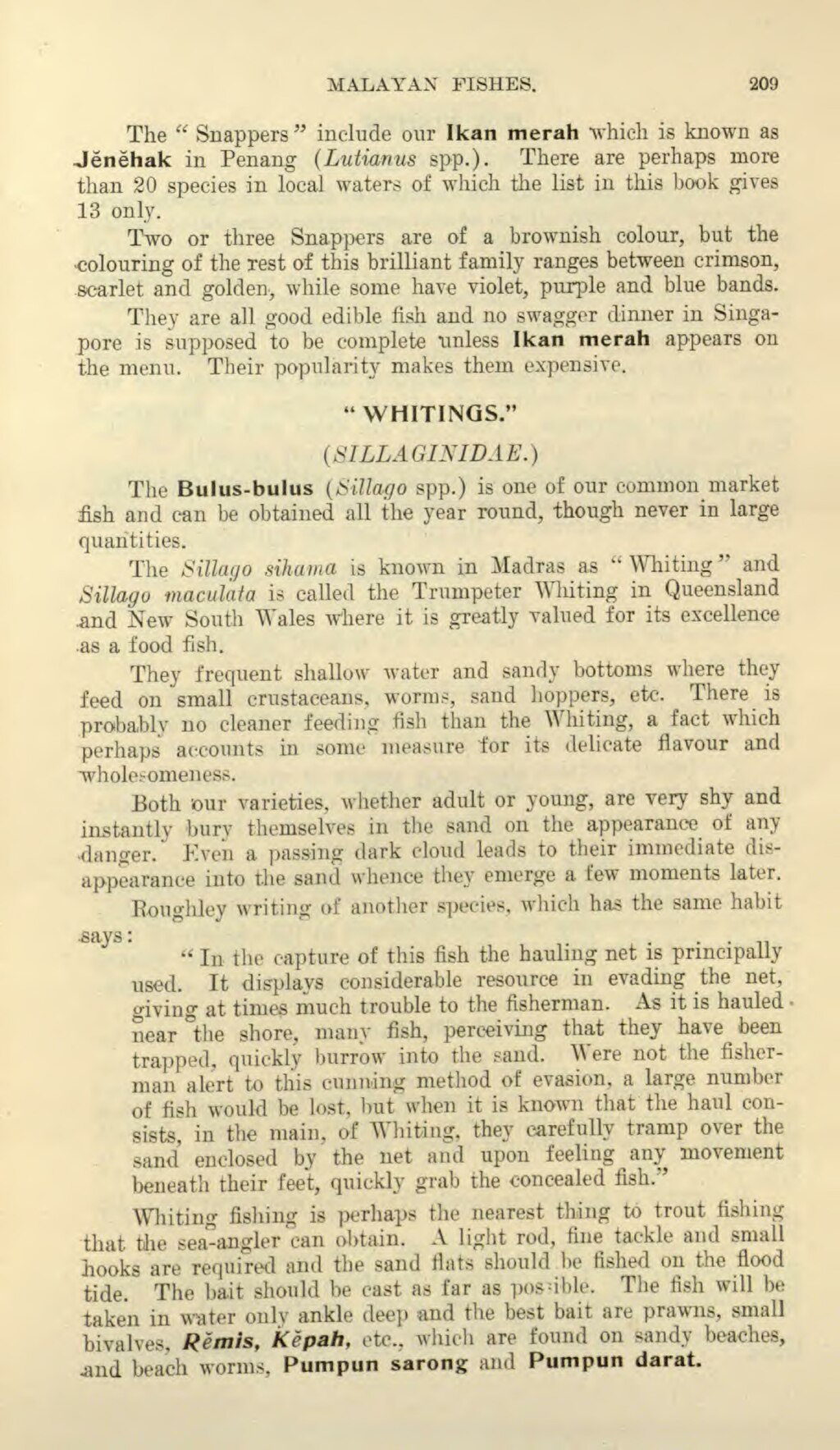The "Snappers" include our Ikan merah which is known as Jěněhak in Penang (Lutianus spp.). There are perhaps more than 20 species in local waters of which the list in this book gives 13 only.
Two or three Snappers are of a brownish colour, but the colouring of the rest of this brilliant family ranges between crimson, scarlet and golden, while some have violet, purple and blue bands.
They are all good edible fish and no swagger dinner in Singapore is supposed to be complete unless Ikan merah appears on the menu. Their popularity makes them expensive.
"WHITINGS."
(SILLAGINIDAE.)
The Bulus-bulus (Sillago spp.) is one of our common market fish and can be obtained all the year round, though never in large quantities.
The Sillago sihama is known in Madras as "Whiting" and Sillago maculata is called the Trumpeter Whiting in Queensland and New South Wales where it is greatly valued for its excellence as a food fish.
They frequent shallow water and sandy bottoms where they feed on small crustaceans, worms, sand hoppers, etc. There is probably no cleaner feeding fish than the Whiting, a fact which perhaps accounts in some measure for its delicate flavour and wholesomeness.
Both our varieties, whether adult or young, are very shy and instantly bury themselves in the sand on the appearance of any danger. Even a passing dark cloud leads to their immediate disappearance into the sand whence they emerge a few moments later.
Roughley writing of another species, which has the same habit says:
"In the capture of this fish the hauling net is principally used. It displays considerable resource in evading the net, giving at times much trouble to the fisherman. As it is hauled. near the shore, many fish, perceiving that they have been trapped, quickly burrow into the sand. Were not the fisherman alert to this cunning method of evasion, a large number of fish would be lost, but when it is known that the haul consists, in the main, of Whiting, they carefully tramp over the sand enclosed by the net and upon feeling any movement beneath their feet, quickly grab the concealed fish."
Whiting fishing is perhaps the nearest thing to trout fishing that the sea-angler can obtain. A light rod, fine tackle and small hooks are required and the sand flats should be fished on the flood tide. The bait should be cast as far as possible. The fish will be taken in water only ankle deep and the best bait are prawns, small bivalves, Rĕmis, Kěpah, etc., which are found on sandy beaches, and beach worms, Pumpun sarong and Pumpun darat.
